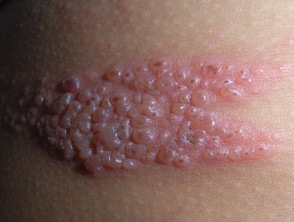Assisted Reproductive Technology (ART)
Assisted Reproductive Technology includes all fertility treatments in which both eggs and sperm are handled. In general, Assisted Reproductive Technology procedures involve surgically removing eggs from a woman’s ovaries, combining them with sperm in the laboratory, and returning them to the woman’s body or donating them to another woman.
They do NOT include treatments in which only sperm are handled (i.e., intrauterine—or artificial—insemination) or procedures in which a woman takes medicine only to stimulate egg production without the intention of having eggs retrieved.
If a woman does not become pregnant after treatment with medical and surgical techniques, she may choose to undergo more complex procedures, called Assisted Reproductive Technology, after consulting with her health care provider.
These include:
The Centers for Disease Control and Prevention compiles annual reports on the success rates of Assisted Reproductive Technology (ART). These reports can be accessed at http://www.cdc.gov/art/ARTReports.htm.
Intrauterine Insemination (IUI)
Intrauterine insemination (pronounced IN-truh-YOO-ter-in in-sem-uh-NEY-shuhn) (IUI) is the placement of a man's sperm into a woman's uterus using a long, narrow tube.1
More information on IUI includes the following1:
- IUI is most effective for treating:
- women who have scarring or defects of the cervix
- men who have low sperm counts
- men who have sperm with low mobility
- men who cannot get erections
- men who have retrograde ejaculation, a condition in which sperm are ejaculated into the bladder instead of out of the penis
Anuncios - IUI can be used in combination with medications that stimulate ovulation; this combination can increase the chance of pregnancy in some cases.
- The success of IUI depends on the cause of the couple's infertility. If inseminations are performed monthly with fresh or frozen sperm, success rates can be as high as 20% per cycle depending on whether fertility medications are used, the age of the female partner, and the infertility diagnosis, as well as on other factors that could affect the success of the cycle.
In Vitro Fertilization
During in vitro fertilization (IVF), eggs and sperm are taken from the couple and are incubated together in a dish in a laboratory to produce an embryo. A health care provider places the embryo into the woman's uterus, where it may implant and result in a successful pregnancy.
The steps of IVF are 2:
- Stimulation of follicular development and egg maturation
- Egg retrieval
- Fertilization
- Embryo transfer
Stimulation of Egg Maturation (also known as ovarian stimulation or ovulation induction)
In this process, a woman takes medication to stimulate the ovaries to make many mature eggs at one time.
These medications are given by injection for 8 to 14 days. A health care provider closely monitors the development of the eggs using transvaginal ultrasound. Blood is drawn frequently to assess estrogen production by the ovaries. When the eggs are mature—as determined by the size of the ovarian follicles and the level of estrogen—an hCG injection initiates the ovulation process. A health care provider takes out (egg retrieval) the eggs 34 to 36 hours after the injection.
Egg Retrieval
This is the process used to remove the eggs from the ovaries so they can be fertilized. The procedure is performed in a physician's office as an outpatient procedure. A mild sedative and painkiller are often used during the procedure, and it normally takes about 30 minutes. The steps for egg retrieval are:
- An ultrasound probe is inserted into the vagina to visualize the ovaries and the follicles, which contain the eggs.
- A long needle is inserted through the wall of the vagina to the ovaries.
- Suction is used to pull the eggs from the ovaries into the needle.
Fertilization
A man provides a semen sample. If the sperm are healthy, they are placed in a dish with the egg and left overnight in an incubator. Fertilization usually occurs on its own. However, sometimes sperm are not able to fertilize the egg on their own. When this is the case, a single sperm is injected into an egg using a needle. This process is called intracytoplasmic (pronounced IN-truh-sahy-tuh-PLAZ-mick) sperm injection (ICSI). About 60% of IVF in the Unites States is performed with ICSI.3 The number of pregnancies from IVF using natural fertilization is about the same as the number resulting from ICSI.
Couples should consider genetic testing if the sperm cannot fertilize the egg on their own. The testing can determine whether the sperm have chromosome problems that might cause development problems in the resulting embryos.
Embryos that develop from IVF are placed into the uterus from 1 to 6 days after retrieval.
Embryo Transfer
This procedure is performed in a physician's office. The procedure is normally painless, but some women may experience cramping.
A health care provider inserts a long, thin tube through the vagina and into the uterus and injects the embryo into the uterus. The embryo should implant into the lining of the uterus 6 to 10 days after retrieval.
- American Society for Reproductive Medicine. (2012). Intrauterine insemination. Retrieved June 11, 2012, from http://www.reproductivefacts.org/intrauterine_insemination_IUI_FactSheet [top]
- American Society for Reproductive Medicine. (2012). Third party reproduction (sperm, egg, and embryo donation and surrogacy): A guide for patients. Retrieved June 11, 2012, fromhttp://www.asrm.org/uploadedFiles/ASRM_Content/Resources/Patient_Resources/Fact_Sheets_and_Info_
Booklets/thirdparty.pdf (PDF - 223 KB) [top] - American Society for Reproductive Medicine. (2012). Assisted reproductive technologies: A guide for patients. Retrieved June 11, 2012,http://asrm.org/uploadedFiles/ASRM_Content/Resources/Patient_Resources/Fact_Sheets_and_Info_Booklets/ART.pdf (PDF - 2.12 MB) [top]
Source
Assisted Reproductive Technology (ART)
Eunice Kennedy Shriver National Institute of
Child Health and Human Development (NICHD)
Geosalud, August 11, 2013






